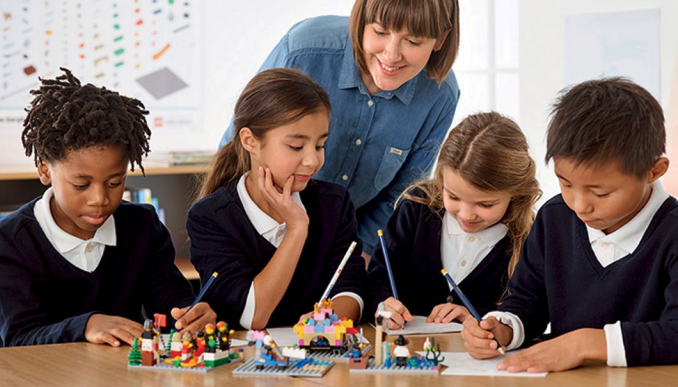
The centrepieces of any LEGO are the LEGO Minifigures, also known as a ‘minifigs’. They were first introduced in 1978 and since then these instantly recognisable anthropomorphised pieces of plastic have become hugely popular and highly collectible.
Standing exactly four standard bricks tall or 4.1mm, about 12 minifigures are produced every second and billions have been sold worldwide making them the world’s largest population group. Until 1989, minifigures had the same smiling expression but now a greater variety of faces are produced; some heads even get an extra face painted on the back so you can turn it around and change moods.
Minifigures make a massive contribution to LEGO because they add humanity to something that is essentially inanimate and industrial. What they help users to do is populate their creations with people and this personification is very powerful especially for the classroom across the curriculum but especially for creative writing, maths, science and life skills.
Minifigures, Maxifun
When it comes to literacy, minifigures can act as catalysts to inspire writing and stories. Writing is creative and playful and LEGO is creative and playful so they are natural partners like macaroni and cheese, eggs and bacon, Ant and Dec. Using LEGO minifigures as writing prompts makes perfect sense because they act as the hook you need to draw children into a writing situation because they readily engage with them, see them as great fun and importantly, they actually want to write about them.
Children can easily personify a minifigure and inject it with feelings, opinions, behaviours and reactions and give it a whole suite of characteristics.